編輯點評:初中英語中考必備的知識點合集
2021年中考英語的提分神器,中考英語高頻考點和綜合模擬復習資料合集免費版,包含了7到9年級英語的所有知識點內容,非常的全面還有一些試題和答案解析,開始復習中考必不可少喲。

初中7-9年級英語知識點匯總圖片預覽


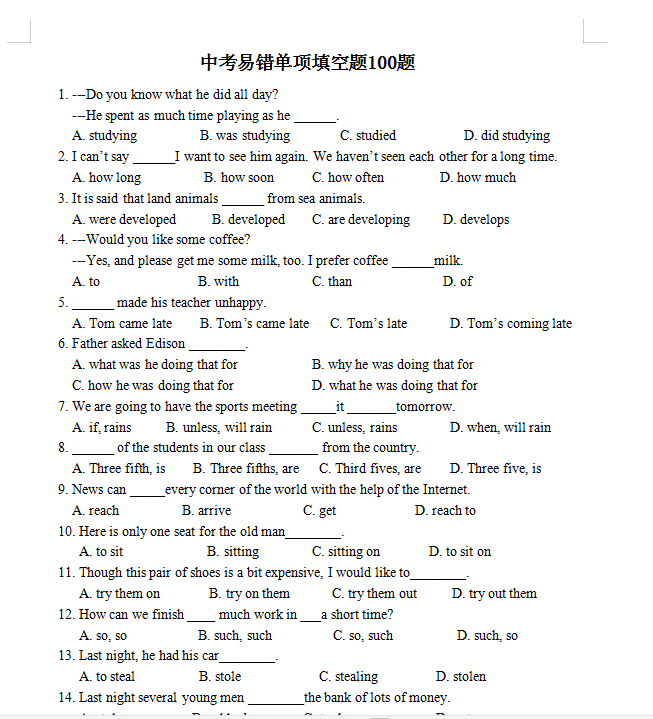




中學英語易錯集錦大全211道題 (精華珍藏版)預覽
1.Because he was ill yesterday, so he didn’t go to work. (×)
Because he was ill yesterday, he didn’t go to work. (√)
He was ill yesterday, so he didn’t go to work. (√)
[析] 用though, but表示“雖然……,但是…… ”或用because, so 表示“因為……,所以……”時,though和but 及because和so 都只能擇一而用,不能兩者同時使用。
2.The Smiths have moved Beijing. (×)
The Smiths have moved to Beijing. (√)
[析] 不及物動詞后接名詞或代詞作賓語時,要在動詞之后加上適當的介詞;但不及物動詞后接home, here, there等副詞作賓語時,動詞之后不必加任何介詞。
3.The box is too heavy for him to carry it. (×)
The box is too heavy for him to carry. (√)
[析] the box既是這句話的主語, 也是不定式to carry的邏輯賓語,若句末再加上it,就和the box重復了。
4.Each of the boys have a pen. (×)
Each of the boys has a pen. (√)
[析] 復數名詞前有表個體的each of, one of, every,either of等詞組修飾,或有表否定的neither of, none of 等詞組修飾時,謂語動詞要用單數形式。
5.例:那是你心軟!我不就是一個例子嗎?
Neither he nor you is good at English. (×)
Neither he nor you are good at English. (√)
[析] either... or..., neither... nor..., not only..., but also... 等詞組連接句子的兩個主語時,謂語動詞遵循“就近一致原則”, 即由靠近謂語的那個主語決定謂語的人稱和數用何種形式。
6.Ten minus three are seven. (×)
Ten minus three is seven. (√)
[析] 用英語表示加(plus)、減(minus)等數學運算時,謂語動詞也用單數形式。
7.The number of the workers in this factory are about 5,000. (×)
The number of the workers in this factory is about 5,000. (√)
[析] the number of表示“……的數量”,謂語動詞用單數形式;a number of 的意思是“若干”或“許多”,相當于some或a lot of,和復數名詞連用,謂語動詞用復數形式。
8. 例. Hello! I have important something to tell you. (×)
Hello! I have something important to tell you. (√)
[析] 形容詞或動詞不定式修飾不定代詞作定語時,修飾成分要置于不定代詞之后。
9. His son is enough old to go to school. (×)
His son is old enough to go to school. (√)
[析] enough作形容詞修飾名詞時,可以放在名詞前,也可放在名詞后;作副詞修飾形容詞或副詞時,只能放在形容詞或副詞之后。
10.. Here is your sweater, put away it.(×)
Here is your sweater, put it away. (√)
[析] put away, pick up, put on等“動詞+副詞”構成的詞組后接代詞作賓語時,代詞只能放在動詞和副詞之間。
11. Look! Here the bus comes.(×)
Look! Here comes the bus.(√)
[析] 在以here, there引起的陳述句中,若句子的主語是名詞,要用倒裝語序,即用“Here /There+動詞+名詞”結構;但主語若是代詞時,則不用倒裝語序, 即用“Here/There +代詞+動詞”結構。
12. I do well in playing football, _______. (我妹妹也行。)A. so my sister does(×)B. so does my sister(√)
Li Lei is really a football fan. --- _______. (確實這樣.) A. So is he(×) B. So he is(√)
[析] “so+be動詞/助動詞+主語”的倒裝結構表示前面所述情況也適用于后者,意為“……也是這樣”;“so+主語+be動詞/助動詞”的陳述結構表示對前述情況的肯定,意為“……確實如此”。
13.重慶比中國的其他城市都大。
Chongqing is larger than any city in China. (×)Chongqing is larger than any other city in China. (√)
[析] “any city in China”包括了重慶這座城市, 同一事物自己與自己不能做比較,只有在city 前加上other才能表示重慶和中國的其它城市比較大小。
The weather in Guangzhou is warmer than Beijing. (×)
The weather in Guangzhou is warmer than that in Beijing . (√)
[析] 表示比較時,句子中的兩個比較對象必須一致,不同的比較對象不能做比較。錯誤句的比較對象分別為the weather in Guangzhou和Beijing,這兩個不同類的事物之間不能做比較。
14, His sister married with a teacher last summer.(×)His sister married a teacher last summer. (√)
[析] 表達“A和B結婚”,要用A married/will marry B。這時務必要避免受漢語影響使用A married/will marry with B。
15. 例There is going to have a film tonight. (×) There is going to be a film tonight. (√)
[析] 一般將來時用在 There be 句式中時,be going to或will之后的動詞原形只能用be,也就是說要用There is (are) going to be.... / There will be....。
16. 例I’ll go hiking if it won’t rain next Sunday. (×)I’ll go hiking if it doesn’t rain next Sunday.(√)
[析] 習慣上在含有時間狀語從句和條件狀語從句的復合句中,如果主句的謂語動詞用了一般將來時,從句的謂語動詞要用一般現在時表示將來的動作。
17.例 Teacher told us yesterday that the earth went around the sun. (×)
Teacher told us yesterday that the earth goes around the sun. (√)
[析] 習慣上在含有賓語從句的復合句中,主句的謂語動詞用了一般過去時,從句的謂語動詞要用過去的某種時態。但如果從句表述的是一客觀事實或客觀真理時,則不受主句時態的影響,而用一般現在時。
18. All the balls are not round. 翻譯成漢語:
所有的球都不是圓的。(×)并不是所有的球都是圓的。(√)
[析] all, every, both等詞和not連用時,not通常放在all, every, both的后面,一般情況下表示部分否定,意為“并非……都……”。
19. 例--- He didn’t go to school yesterday, did he?-- _______, though he didn’t feel very well.
A. No, he didn’t (×) B. Yes, he did (√)
例--- Don’t you usually come to school by bike?-- _______. But I sometimes walk.
A. No, I don’t (×) B. Yes, I do (√)
[析] 習慣上英語中的yes意為“是的”,no意為“不”,但在“前否后肯”的反意疑問句或否定疑問句中,yes意為“不”,no意為“是的”。
20.---- Excuse me, is the supermarket far from here?---- No,it's about _______.
A. 7 minutes walk B. 7 minute walk C. 7 minutes' walk D. 7 minute's walk
答案為C。本題考查名詞所有格用法。當名詞的復數以-s結尾時,則只需要加“'”即可,則“7分鐘的距離”為“7 minutes' walk”。
21. You can not imagine how much I ______ on this dress. Is it beautiful?
A. paid B. took C. cost D. spent
[剖析] 答案為D。本題考察四個表“花費”的動詞辨析。主語為人,且和介詞on搭配的動詞是spend。
22. ---- Do you know _____ university student who is talking with Joe?---- Yes, she,s my cousin, Kate.
A. a B. an C. the D. /
[剖析] 答案為C。university雖然以元音字母u開頭,但其前若使用不定冠詞時,則要用a.不過此題中不能使用不定冠詞,而是特指和Joe說話的那個大學生,故要選the。
23. The number of giant pandas is getting ______ because their living areas are becoming farmlands.
A. less and less B. larger and larger C. smaller and smaller D. fewer and
fewer
[剖析] 答案為C。句意為“大熊貓的數量越來越少因為他們的生存空間正逐漸變成農場”。本題中四個選項都是“比較級+ and + 比較級”的結構,表示“越來越……”。主語為number,只能和large或small搭配。而結合句意可判斷答案為C。
24. Be careful when you come _______ the street,because the traffic is very busy
at the moment.A. across B. behind C. between D. over
[剖析] 答案為A。本題考察方位介詞的用法。“過馬路”一般為表面橫穿,因此要用across。
25. ---- Do you often clean your classroom?---- Yes, our classroom ______ every day.
A. clean B. cleans C. is cleaned D. Cleaned
[剖析] 答案為C。句中有every day,主語為our classroom,故要用一般現在時的被動語態。
26. Lucy usually cleans the cage every two days. (對畫線部分提問)_ _______ Lucy usually clean the cage?
[剖析] 答案為How often does。對every two days提問要用how often。
27. I didn't understand __________,so I raised my hand to ask...
A. what my teacher says B. what does my teacher say C. what my teacher said D. what did my teacher say
[剖析] 答案為C。本題為賓語從句,由于需要用陳述語序可排除B、D;另外,主句時態為一般過去時,則從句也要用對應的過去時態,故還可排除A。
28. ---- How much ______ the shoes? ---- Five dollars ______ enough.
A. is;is B. are;is C. are;are D. is;are
[剖析] 答案為B。shoes作主語時,謂語動詞應用復數形式;five dollars是一個整體,應按單數對待。
29. 誤〕 We got to the top of the mountain in daybreak. 〔正〕 We got to the top of the mountain at day break.
〔析〕at用于具體時刻之前,如:sunrise, midday, noon, sunset, midnight, night。
30. 〔誤〕 Dont sleep at daytime 〔正〕 Dont sleep in daytime.
〔析〕in 要用于較長的一段時間之內,如:in the morning / afternoon, 或 in the week / month / year. 或 in spring / supper /autumn / winter等等。
31. 〔誤〕 He became a writter at his twenties 〔正〕 He became a writter in his twenties
〔析〕這句話應譯為:他在20多歲時就成了作家。在某人的一段生活時間段中要用介詞in來表示,而在具體歲數時用at來表示。
32. 誤〕 We went to swim in the river in a very hot day. 〔正〕 We went to swim in the river on a very hot day.
〔析〕具體某一天要用介詞on, 又如:on New Years Day
33. 〔誤〕 Im looking forward to seeing you on Christmas. 〔正〕 Im looking for ward to seeing you at Christmas.
〔析〕在節日的當天用on,而全部節日期間用at,Christmas是圣誕節期間,一般要有兩周或更長的時間。
34. 誤 I havent see you during the summer holidays. 正 I havent seen you since the beginning of the summer holidays. 〔析〕 during表示在某一段時間之內,所以一般不與完成時搭配,如:I visited a lot of museums during the holiday. 而for表示一段時間,可以用于完成時,如:I havent see you for a long time. 而through 用來表示時間時則為"整整,全部的時間"。如:It rained through the night.而since則是表達主句動作的起始時間,一般要與完成時連用。
35. 〔誤〕 At entering the classroom, I heard the good news. 〔正〕 On entering the classroom, I heard the good news. 〔析〕 On 加動名詞表示"一……就"。本句的譯文應是:我一進入教室就聽見這個好消息了。又如:on hearing… 一聽見, on arrival 一到達就……(on表示動作的名詞)
36. 〔誤〕 In the beginning of the book, there are some interesting stories. 〔正〕 At the beginning of the book, there are some interesting stories. 〔析〕 at the begining與at the end都是指某事物的開始與結束部分,均不指時間范圍,而in the beginning 則是指開始一段時間。in the end=at last是指"最終,終于"之意。
37. 〔誤〕 Till the end of next week. I will have finished this work. 〔正〕 By the end of next week. I will have finished this work. 〔析〕 by 引起的時間狀語表示了動作的截止點,其意思為"不遲于某一時刻將工作做完",所以主句一般是完成時態。當然可以有將來時態,如:Ill be there by five oclock.而till則表達其一動作一直持續到某一時刻,但句中的動詞一定要用持續性動詞,而瞬間的截止性動詞應用其否定句式,如:I wont finish this work till(until) next weekend.
38. 〔誤〕 He came to London before last weekend. 〔正〕 He had come to London before last weekend.
〔正〕He came to London two weeks ago. 〔析〕 before 一般要與完成時連用,而ago則與一般過去時連用。
中考英語重點知識歸納
【知識框架】
因為初中英語知識點很多很零碎,所以最好分塊整理記憶。一般來說,分為詞匯、語法、句型3部分。其中,詞匯包括單詞和單詞變形、詞組。
在這里推薦一本中考復習資料,巨微英語《中考英語四輪復習》,全面涵蓋中考3114個可考知識點,分詞匯、語法、難句、題型4部分,4輪循序漸進,每輪都區分了必考點、基礎點和超綱點,備考重點更精準,尤其適合英語基礎弱的初三同學。
【中考英語重點知識歸納——詞匯篇】
拿你手頭的詞匯書,或者每冊課本后面的單詞表,蓋住漢語想單詞意思,蓋住英語想單詞拼寫。把英漢互譯都很順利的單詞劃掉,剩下的那些就是你現階段要解決的單詞。
這里分享一下記單詞不忘的小技巧。單詞總忘,是因為你沒復習,你只背過一次單詞,之后就再也沒看過,如果是這樣,當你背到第5頁單詞時,第1頁就全忘光了,這就叫無用功。
艾賓浩斯遺忘曲線提醒我們,剛背完單詞,遺忘速度最快,所以剛開始復習勤一點兒,后面就算不復習也不容易忘。比如你早上背了單詞,那么中午、晚上、第二天早上各復習一次,周末再來一次總復習,用這樣的方法記單詞,就會記得很牢。
【中考英語重點知識歸納——語法篇】
初中語法的重難點在于時態和復合句(賓語從句、定語從句、狀語從句)。學習語法不能只看概念,一定得自己做題。
上面推薦的那本巨微英語《中考英語四輪復習》就配了一個《隨堂1000題》的冊子,每學完一個專題,就要立即做題檢查自己是否真的掌握了。它還有一本單獨成冊的答案《1000題精解》,講答案的同時會幫你回顧知識點。
【中考英語重點知識歸納——句型篇】
句型是語法的升級版,背句型主要是為了作文,為了寫出精彩的開頭結尾。句型可以分類背,比如計劃打算、活動介紹、安全健康、親子關系等。針對開頭句,分別舉個例子。
1、sb. have/has made a plan for…某人為……制定了計劃。
2、In order to…,sb. am/is/are planning to have a party in…
為了……,某人計劃在……舉行一個聚會。
3、As far as we know/As we all know, it is very important to keep healthy/safe.
眾所周知,保持健康/安全是非常重要的。
4、I have a warm and happy family, and there are 4 people in my family.
我有一個溫馨快樂的家,家里有四口人。

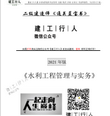 2021年二建水利通關藍寶書
2021年二建水利通關藍寶書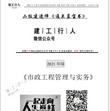 2021年二建市政通關藍寶書在線閱讀
2021年二建市政通關藍寶書在線閱讀 2022考蟲數學高數必練1000題pdf
2022考蟲數學高數必練1000題pdf 黃岡歷年中考物理試卷及答案解析2007-2020年整合版
黃岡歷年中考物理試卷及答案解析2007-2020年整合版 黃岡市中考化學試卷2012-2020年整合版
黃岡市中考化學試卷2012-2020年整合版 黃岡中考英語試卷及答案2007-2020整合word版
黃岡中考英語試卷及答案2007-2020整合word版 黃岡數學中考試卷及答案2011-2020年整合版
黃岡數學中考試卷及答案2011-2020年整合版 計算機畢業設計:ASP語言設計完整版
計算機畢業設計:ASP語言設計完整版 2021年中國95后女性洞察報告pdf免費在線閱讀
2021年中國95后女性洞察報告pdf免費在線閱讀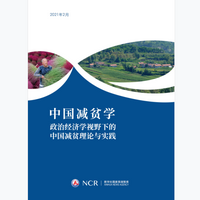 中國減貧學報告電子版免費在線閱讀
中國減貧學報告電子版免費在線閱讀








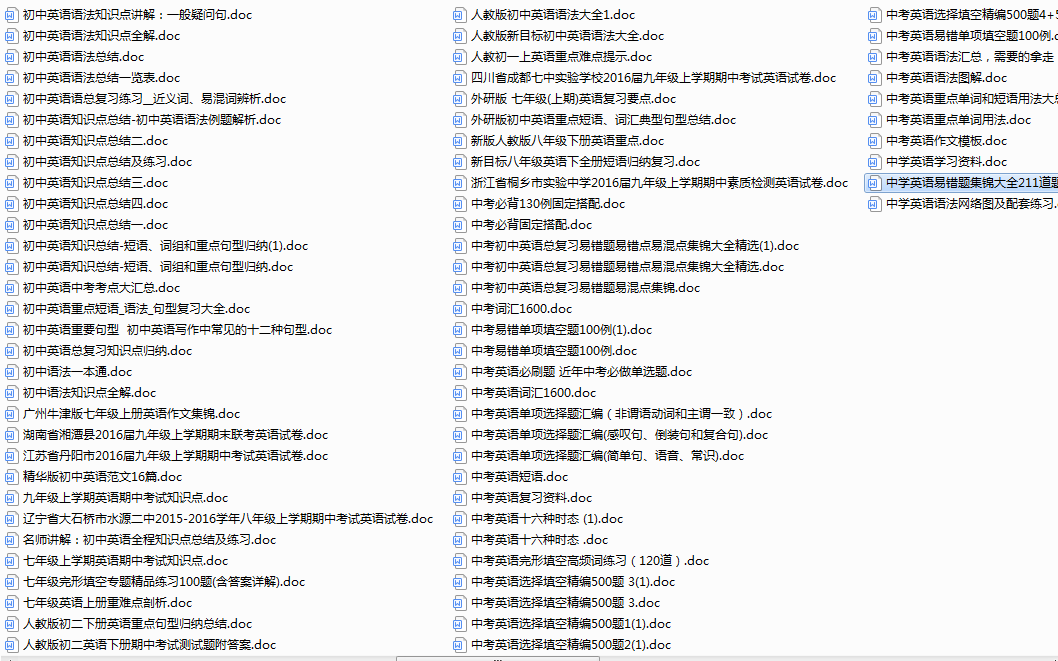
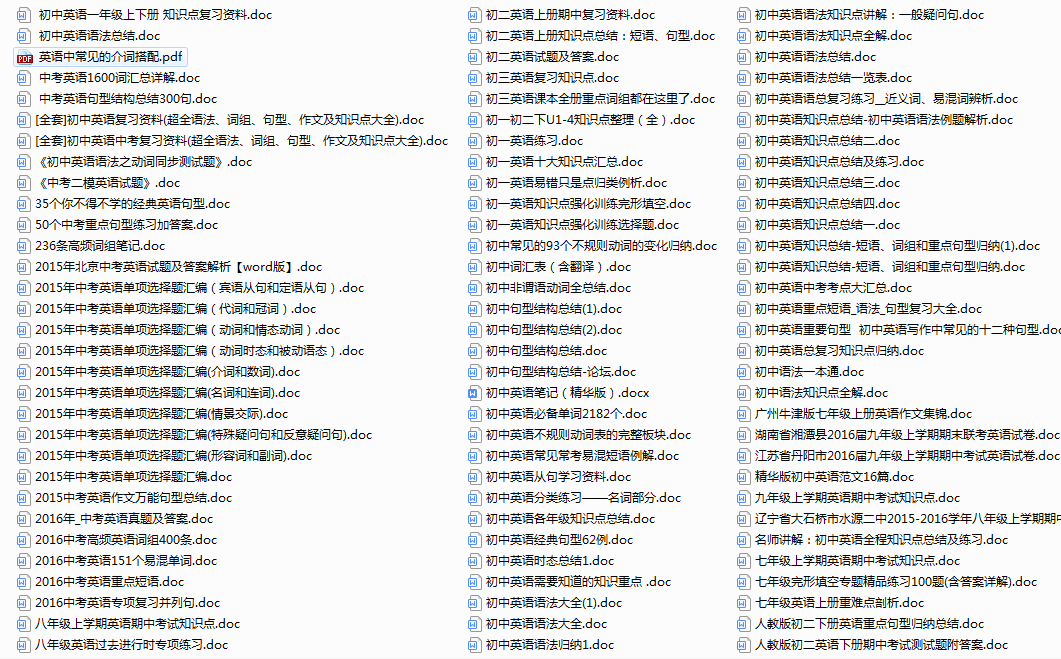
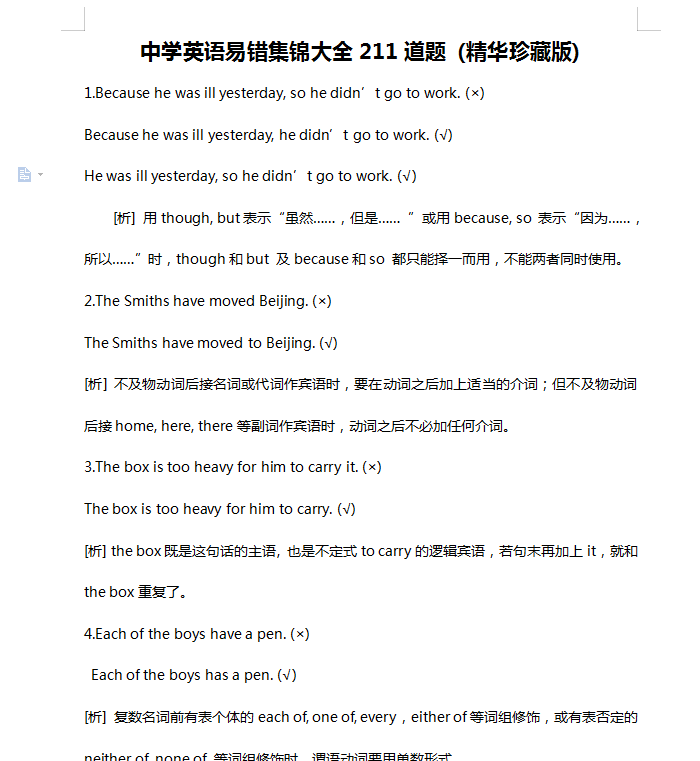








 2021年四川等地中考真題卷及答案pdf版高清完整版
2021年四川等地中考真題卷及答案pdf版高清完整版 2022河南高三二模試卷及答案解析整合無水印版
2022河南高三二模試卷及答案解析整合無水印版 2022河南高三一模試卷及答案解析免費整合版
2022河南高三一模試卷及答案解析免費整合版 2022中考化學必考知識點總結免費文檔word完整版
2022中考化學必考知識點總結免費文檔word完整版 MBA英語口語面試真題匯總附面試真題答案
MBA英語口語面試真題匯總附面試真題答案 部編版語文五年級上冊單元基礎知識復習檢測含答案doc 完整版
部編版語文五年級上冊單元基礎知識復習檢測含答案doc 完整版 學校家長沙龍活動方案共三篇doc完整免費版
學校家長沙龍活動方案共三篇doc完整免費版 2020年全國青少年禁毒知識競賽小學組/中學組題庫1.0Word完整免費版
2020年全國青少年禁毒知識競賽小學組/中學組題庫1.0Word完整免費版 重慶市中小學生家庭教育與網絡安全觀后感docx免費下載
重慶市中小學生家庭教育與網絡安全觀后感docx免費下載 計算機輔助設計與制造pdf電子版下載
計算機輔助設計與制造pdf電子版下載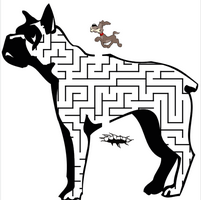
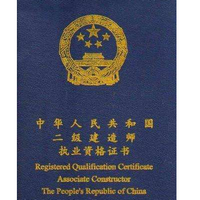






 新高考復習資料合集
新高考復習資料合集 三年級復習資料合集
三年級復習資料合集 二級建造師考試資料大全
二級建造師考試資料大全 數學題庫文檔
數學題庫文檔
熱門評論
最新評論